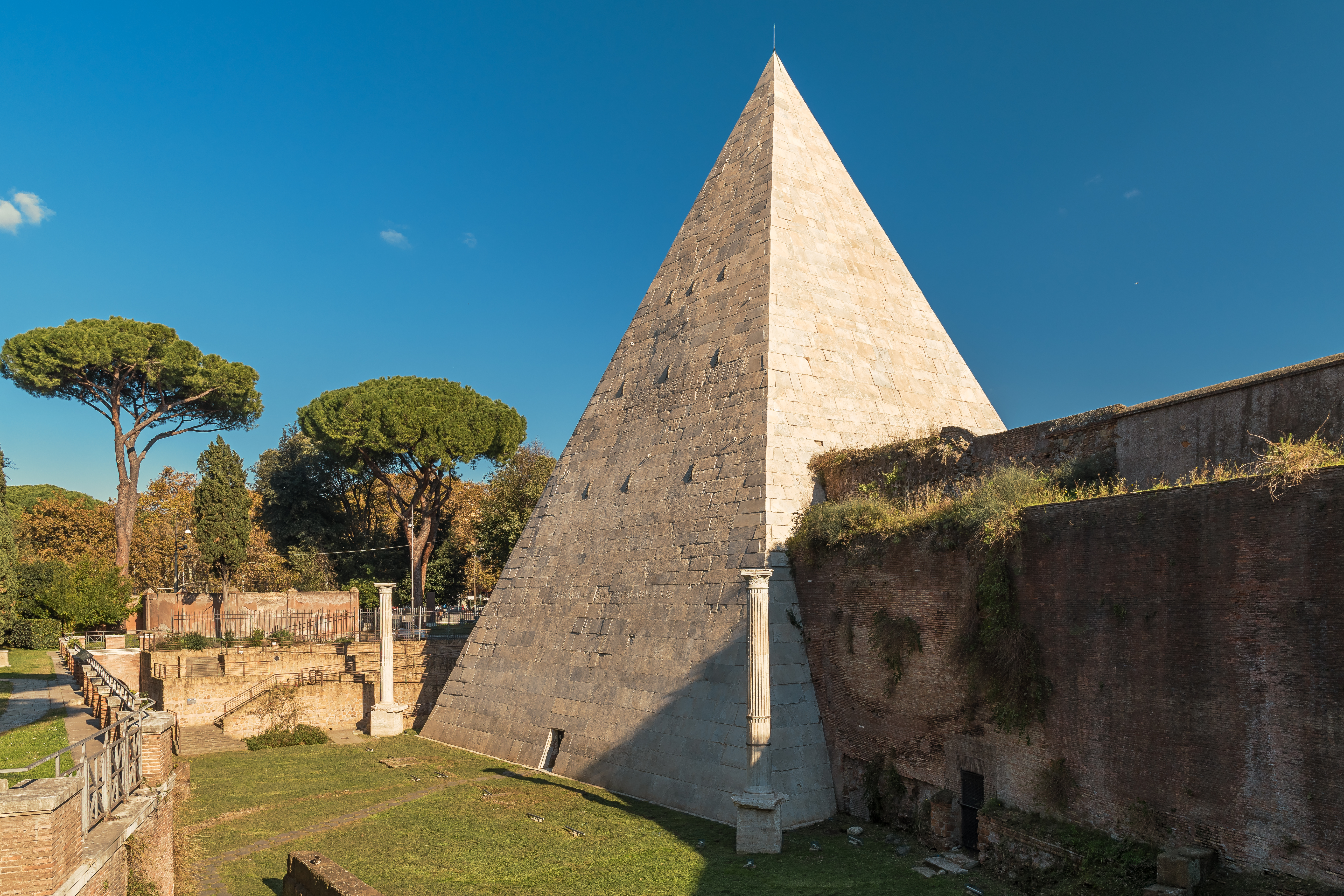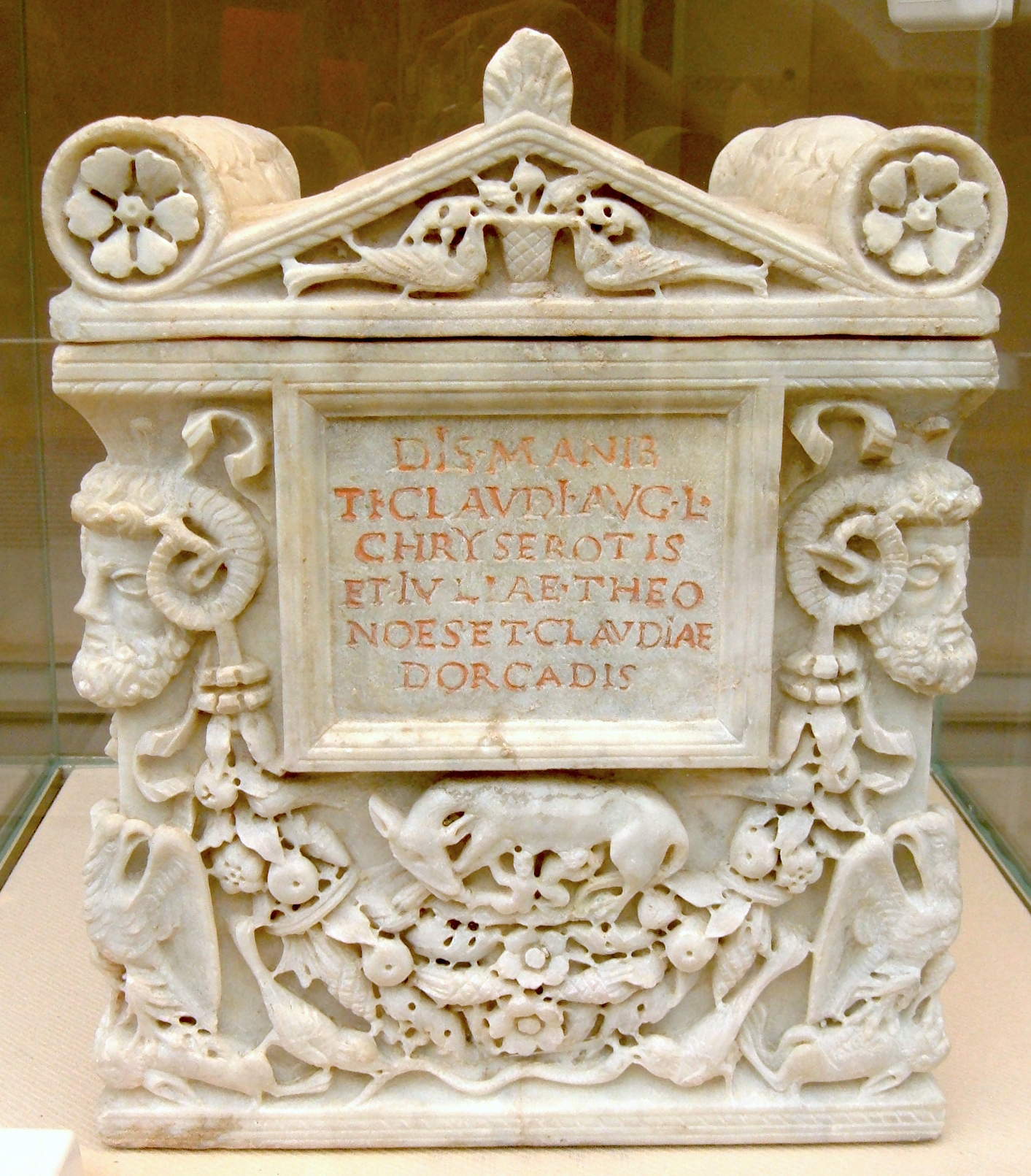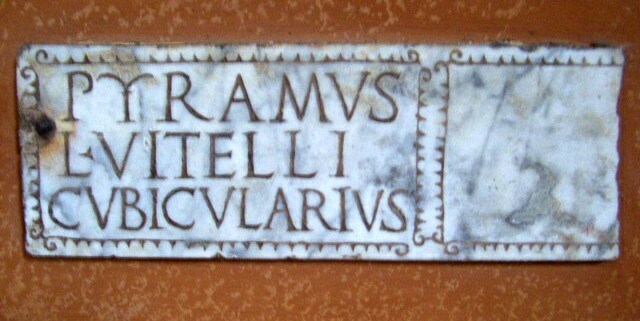|
Monte Dei Cocci
Monte Testaccio () or Monte Testaceo, also known as Monte dei Cocci, is an artificial mound in Rome composed almost entirely of (), fragments of broken ancient Roman pottery, nearly all discarded amphorae dating from the time of the Roman Empire, some of which were labelled with . It is one of the largest spoil heaps found anywhere in the ancient world, covering an area of at its base and with a volume of approximately , containing the remains of an estimated 53 million amphorae. It has a circumference of nearly a kilometre (0.6 mi) and stands 35 metres (115 ft) high, though it was probably considerably higher in ancient times.Claridge, Amanda (1998). ''Rome: An Oxford Archaeological Guide'', First, Oxford, UK: Oxford University Press, 1998, p. 367–368. J. Theodore Peña, ''Roman pottery in the archaeological record'', p. 300–306. Cambridge University Press, 2007. It stands a short distance away from the east bank of the River Tiber, near the Horrea Galbae wher ... [...More Info...] [...Related Items...] OR: [Wikipedia] [Google] [Baidu] |
Regio XIII Aventinus
The Regio XIII Aventinus is the thirteenth 14 regions of Augustan Rome, regio of imperial Rome, under Augustus's administrative reform. Regio XIII took its name from the hill which dominated the region, the Aventine Hill, Aventine. Geographic extent and important features Regio XIII not only contained the Aventine Hill, but also the plain in front of it. In extent, this region was bordered by the Tiber River to the west, the Circus Maximus to the north, the ''Vicus Piscinae Publicae'' and the Via Ostiensis to the east, and the Aurelian Walls to the south. Its principal gate through the walls was the Porta Ostiensis. A measurement taken at the end of the 4th century recorded that the perimeter of the region was 18,000 Roman feet (approximately 5.3 km). The region contained a number of temples, including the Temple of Diana (Rome), Temple of Diana (reportedly built by the king Servius Tullius), the Temple of Minerva (Aventine), Temple of Minerva and the Temple of Juno Regina ... [...More Info...] [...Related Items...] OR: [Wikipedia] [Google] [Baidu] |
Tripolitania
Tripolitania (), historically known as the Tripoli region, is a historic region and former province of Libya. The region had been settled since antiquity, first coming to prominence as part of the Carthaginian empire. Following the defeat of Carthage in the Punic Wars, Ancient Rome organized the region (along with what is now modern day Tunisia and eastern Algeria), into a province known as Africa, and placed it under the administration of a proconsul. During the Diocletian reforms of the late 3rd century, all of North Africa was placed into the newly created Diocese of Africa, of which Tripolitania was a constituent province. After the fall of the Western Roman Empire in the 5th century, Tripolitania changed hands between the Vandals and the Byzantine Empire, until it was taken during the Muslim conquest of the Maghreb in the 8th century. It was part of the region known to the Islamic world as Ifriqiya, whose boundaries roughly mirrored those of the old Roman province of ... [...More Info...] [...Related Items...] OR: [Wikipedia] [Google] [Baidu] |
Circus Of Maxentius
The Circus of Maxentius (known until the 19th century as the Circus of Caracalla) is an ancient structure in Rome, Italy, part of a complex of buildings erected by emperor Maxentius on the Via Appia between AD 306 and 312. It is situated between the second and third miles of the Via Appia, between the basilica and catacombs of San Sebastiano and the imposing late republican tomb of Caecilia Metella, which dominates the hill that rises immediately to the east of the complex. It is part of the Appian Way Regional Park. Overview The Circus of Maxentius is the best preserved circus in the area of Rome, and is second only in size to the Circus Maximus in Rome. The only games recorded at the Circus were its inaugural ones and these are generally thought to have been funerary in character. They would have been held in honour of Maxentius' son Valerius Romulus, who died in AD 309 at a very young age and who was probably interred in the adjacent cylindrical tomb (tomb of Romulus). T ... [...More Info...] [...Related Items...] OR: [Wikipedia] [Google] [Baidu] |
Mireille Corbier
Mireille Corbier (born 24 May 1943) is a French historian of Classical history. Currently Research Director Emerita at Centre national de la recherche scientifique (CNRS), she has published a number of books and articles, and since 1992 has been editor-in-chief of ''L'Année épigraphique''. Career Corbier began her studies at the Ecole Normale Superieure (1962–1966), during which she became a Fellow of Gonville and Caius College, Cambridge. From 1967 to 1972 she taught ancient history at the University of Paris, X Nanterre. From 1972 to 1975 she was a member of the École française de Rome, where she produced her monograph, ''L'aerarium saturni et l'aerarium militare. Administration et prosopographie sénatoriale'' (1974). She then joined CNRS in 1975, meanwhile teaching anthropology at the University of Paris VIII Vincennes. Awards Corbier is a Chevalier de l’Ordre National du Mérite, and a member of several professional associations and learned societies. She gave ... [...More Info...] [...Related Items...] OR: [Wikipedia] [Google] [Baidu] |
Testaccio 1625
Testaccio () is the 20th of Rome, Italy, identified by the initials R. XX, deriving its name from Monte Testaccio. It is located within the Municipio I. Its coat of arms depicts an amphora, referencing to the broken vessels that Monte Testaccio is made of. History In antiquity, much of the Tiber trade took place here, and the remains of broken clay vessels (amphorae) were stacked creating the artificial Testaccio hill, which today is a source of much archaeological evidence as to the history of ancient everyday Roman life. Until the urban recovery that took place after 1870, which destined a huge area to industrial and manufacturing purposes, the borough was chiefly inhabited by poor farmers and shepherds, it was vulnerable to the Tiber floods and infested by malaria. The zone between Monte Testaccio and the city walls (Prati di Testaccio) was public and commonly used by the citizens as a recreation ground, traditional destination of holiday trips and of the typical ''ottobrat ... [...More Info...] [...Related Items...] OR: [Wikipedia] [Google] [Baidu] |
Freedmen
A freedman or freedwoman is a person who has been released from slavery, usually by legal means. Historically, slaves were freed by manumission (granted freedom by their owners), emancipation (granted freedom as part of a larger group), or self-purchase. A fugitive slave is a person who escaped enslavement by fleeing. Ancient Rome Rome differed from Greek city-states in allowing freed slaves to become plebeian citizens. The act of freeing a slave was called ''manumissio'', from ''manus'', "hand" (in the sense of holding or possessing something), and ''missio'', the act of releasing. After manumission, a slave who had belonged to a Roman citizen enjoyed not only passive freedom from ownership, but active political freedom ''(libertas)'', including the right to vote. A slave who had acquired ''libertas'' was known as a ''libertus'' ("freed person", feminine ''liberta'') in relation to his former master, who was called his or her patron ''( patronus)''. As a social class, fre ... [...More Info...] [...Related Items...] OR: [Wikipedia] [Google] [Baidu] |
Praefectus Annonae
The ("prefect of the provisions"), also called the ("prefect of the grain supply"), was a Roman official charged with the supervision of the grain supply to the city of Rome. Under the Republic, the job was usually done by an aedile. However, in emergencies, or in times of extraordinary scarcity, someone would be elected to the office, and would take charge of supplying the entire city with provisions. Lucius Minucius Augurinus, the accuser of Spurius Maelius, was the first individual appointed to this office, serving from 439 BC. During the early 60s BC, following the sacking of the port of Ostia by pirates, Pompey held the powers of the office. Around 7 BC, the first Roman Emperor, Augustus, followed this example, and after vesting himself with these powers, specified that two former praetors should be appointed each year to carry out the functions of this office. Augustus transferred powers from the aediles to this office, and specified that all holders of the office b ... [...More Info...] [...Related Items...] OR: [Wikipedia] [Google] [Baidu] |
Tituli Picti Dressel
:''See also Titulus (Roman Catholic) for Roman churches called tituli, or titulus (other) for more meanings.'' ''Titulus'' (Latin "inscription" or "label", the plural ''tituli'' is also used in English) is a term used for the labels or captions naming figures or subjects in art, which were commonly added in classical and medieval art, and remain conventional in Eastern Orthodox icons. In particular the term describes the conventional inscriptions on stone that listed the honours of an individual or that identified boundaries in the Roman Empire. A titulus pictus is a merchant's mark or other commercial inscription. The sense of "title", as in "book title", in modern English derives from this artistic sense, just as the legal sense derives from plainer inscriptions of record. Use in Western art The increasing reluctance of the art of the West to use ''tituli'' was perhaps because so few people could read them in the Early Medieval period, and later because they reduc ... [...More Info...] [...Related Items...] OR: [Wikipedia] [Google] [Baidu] |
Soap
Soap is a salt (chemistry), salt of a fatty acid (sometimes other carboxylic acids) used for cleaning and lubricating products as well as other applications. In a domestic setting, soaps, specifically "toilet soaps", are surfactants usually used for washing, bathing, and other types of housekeeping. In industrial settings, soaps are used as thickeners, components of some lubricants, emulsifiers, and catalysts. Soaps are often produced by mixing fats and oils with a Base (chemistry), base. Humans have used soap for millennia; evidence exists for the production of soap-like materials in ancient Babylon around 2800 BC. Types Toilet soaps In a domestic setting, "soap" usually refers to what is technically called a toilet soap, used for household and personal cleaning. Toilet soaps are salts of fatty acids with the general formula (Carboxylate ion, RCO2−)M+, where M is Sodium, Na (sodium) or Potassium, K (potassium). When used for cleaning, soap solubilizes particles and g ... [...More Info...] [...Related Items...] OR: [Wikipedia] [Google] [Baidu] |
Lime (material)
Lime is an Inorganic compound, inorganic material composed primarily of calcium oxides and hydroxides. It is also the name for calcium oxide which is used as an industrial mineral and is made by heating calcium carbonate in a kiln. Calcium oxide can occur as a product of coal-seam fires and in altered limestone xenoliths in volcanic ejecta. The International Mineralogical Association recognizes lime as a mineral with the chemical formula of CaO. The word ''lime'' originates with its earliest use as building mortar and has the sense of ''sticking or adhering''. These materials are still used in large quantities in the manufacture of steel and as building and engineering materials (including limestone products, cement, concrete, and mortar (masonry), mortar), as chemical feedstocks, for sugar refining, and other uses. Lime industries and the use of many of the resulting products date from prehistoric times in both the Old World and the New World. Lime is used extensively for was ... [...More Info...] [...Related Items...] OR: [Wikipedia] [Google] [Baidu] |
Concrete
Concrete is a composite material composed of aggregate bound together with a fluid cement that cures to a solid over time. It is the second-most-used substance (after water), the most–widely used building material, and the most-manufactured material in the world. When aggregate is mixed with dry Portland cement and water, the mixture forms a fluid slurry that can be poured and molded into shape. The cement reacts with the water through a process called hydration, which hardens it after several hours to form a solid matrix that binds the materials together into a durable stone-like material with various uses. This time allows concrete to not only be cast in forms, but also to have a variety of tooled processes performed. The hydration process is exothermic, which means that ambient temperature plays a significant role in how long it takes concrete to set. Often, additives (such as pozzolans or superplasticizers) are included in the mixture to improve the physical prop ... [...More Info...] [...Related Items...] OR: [Wikipedia] [Google] [Baidu] |






